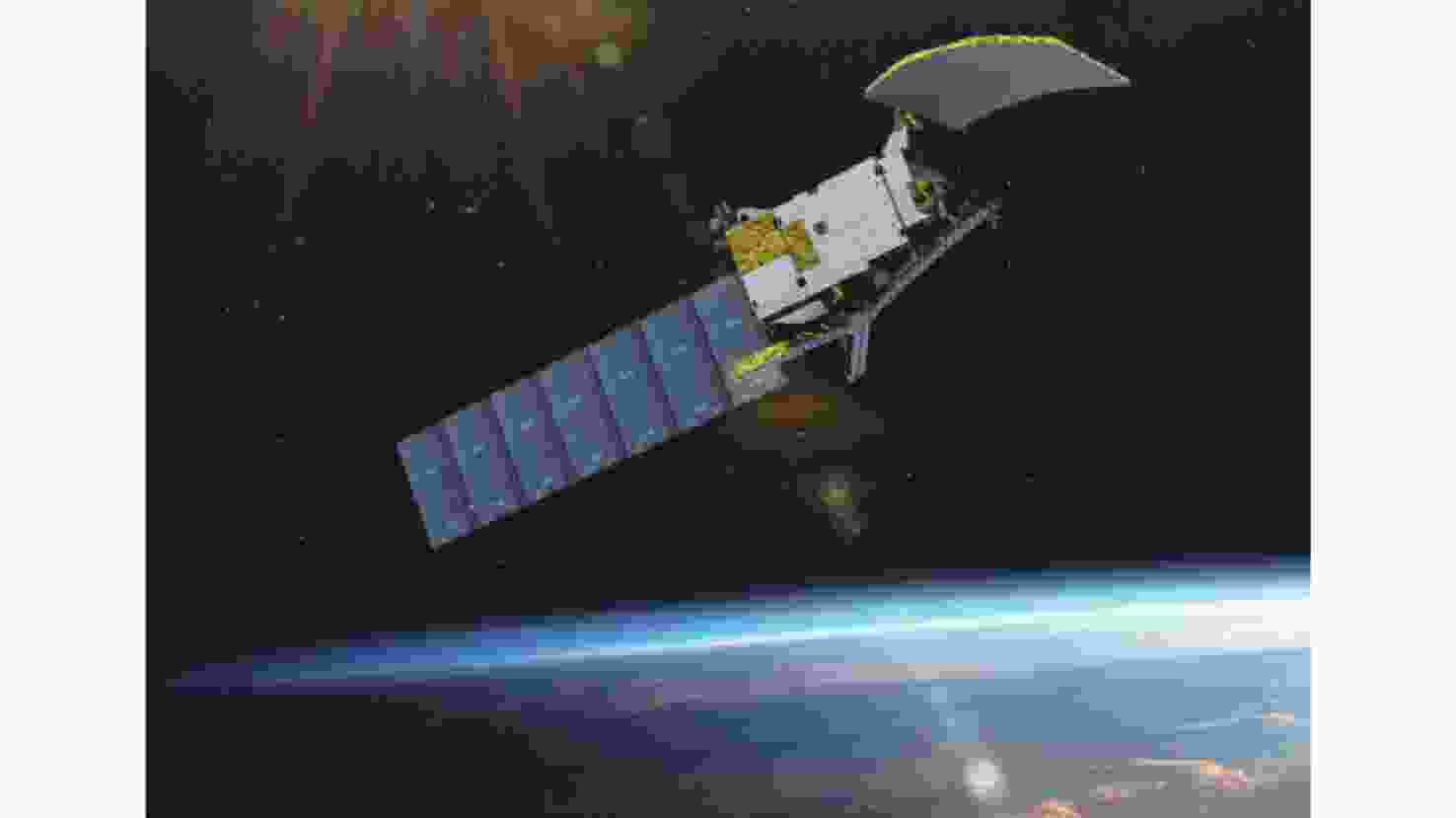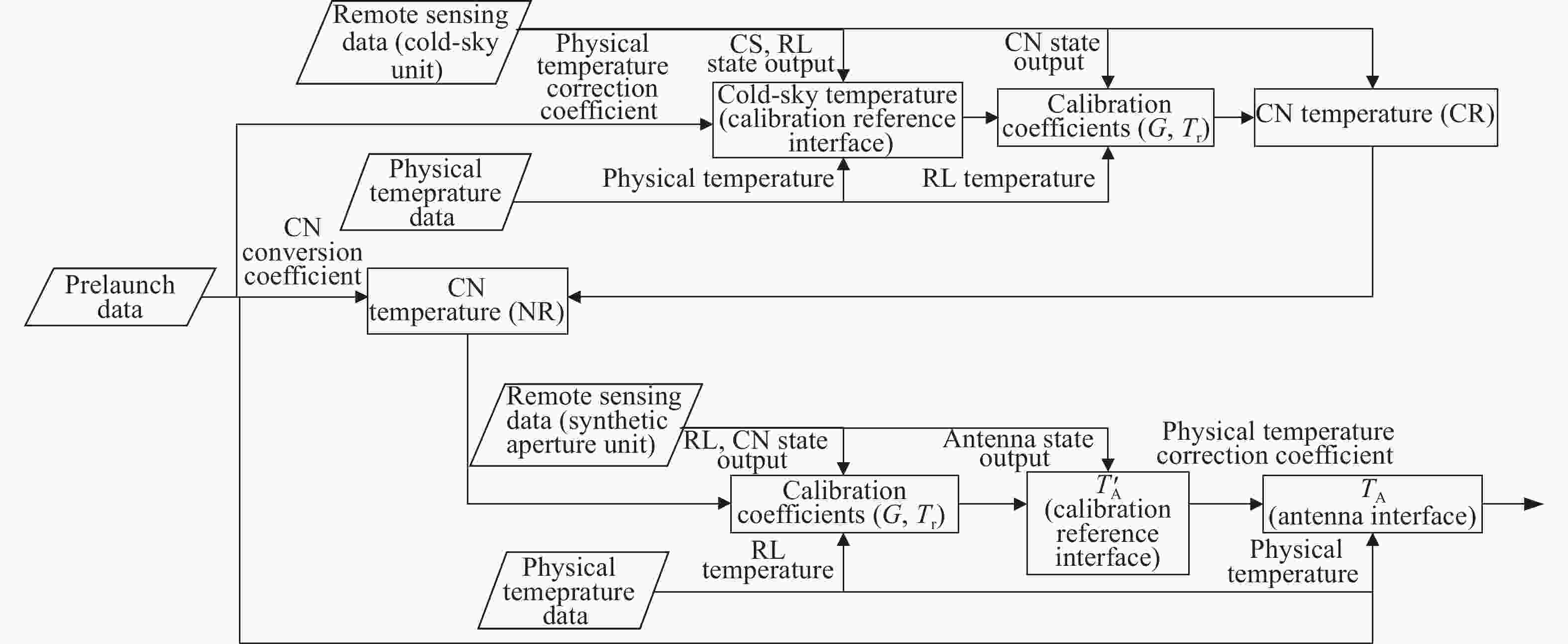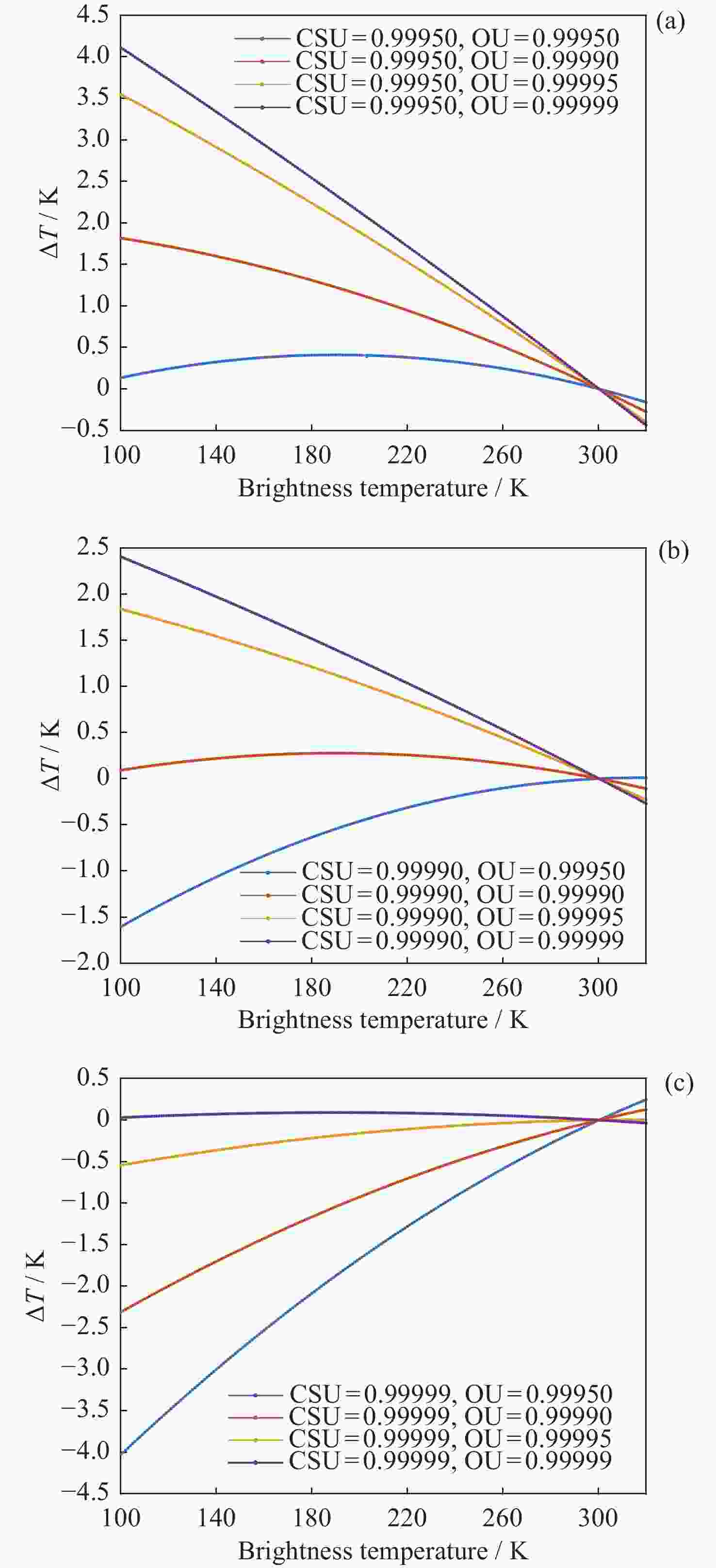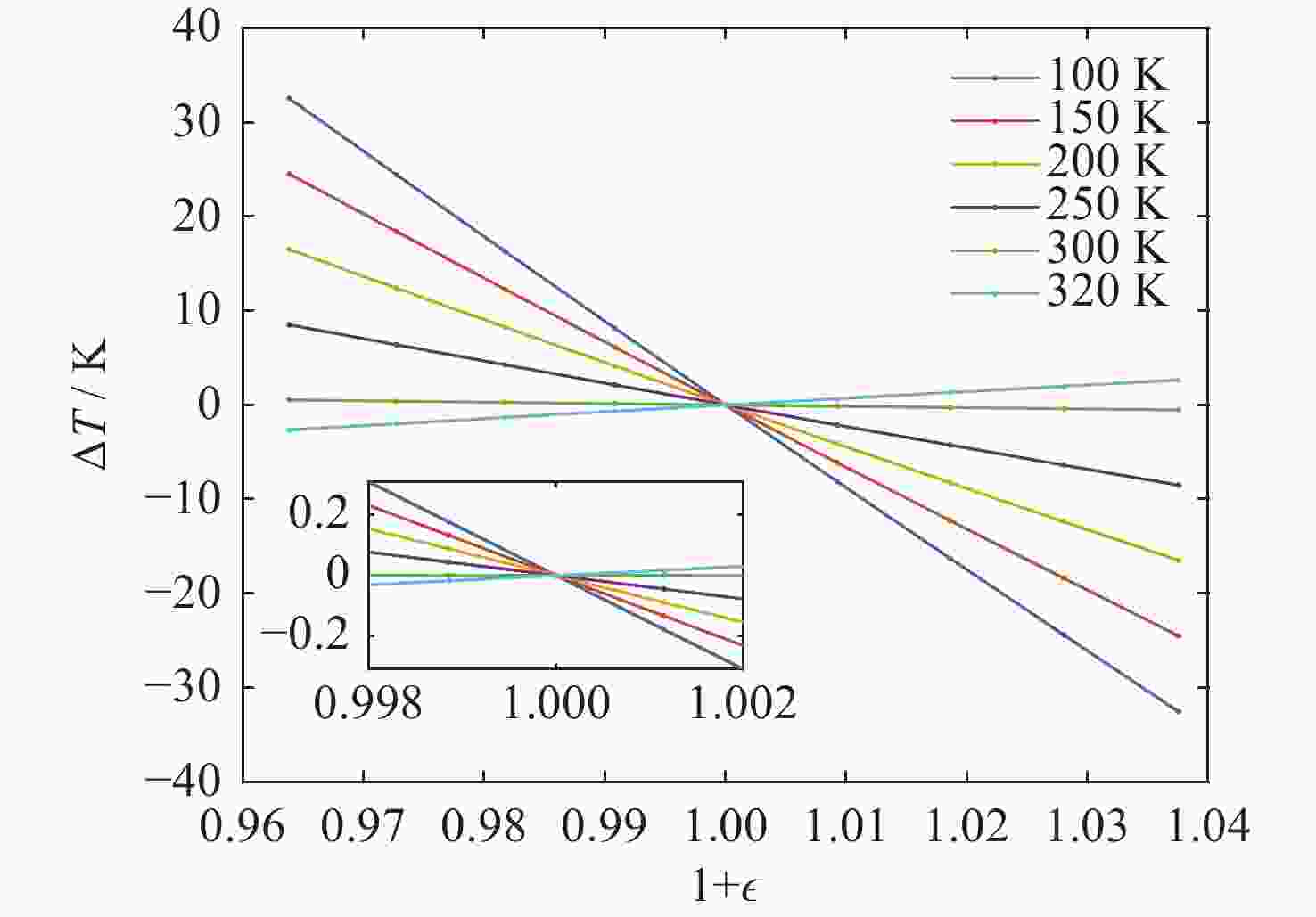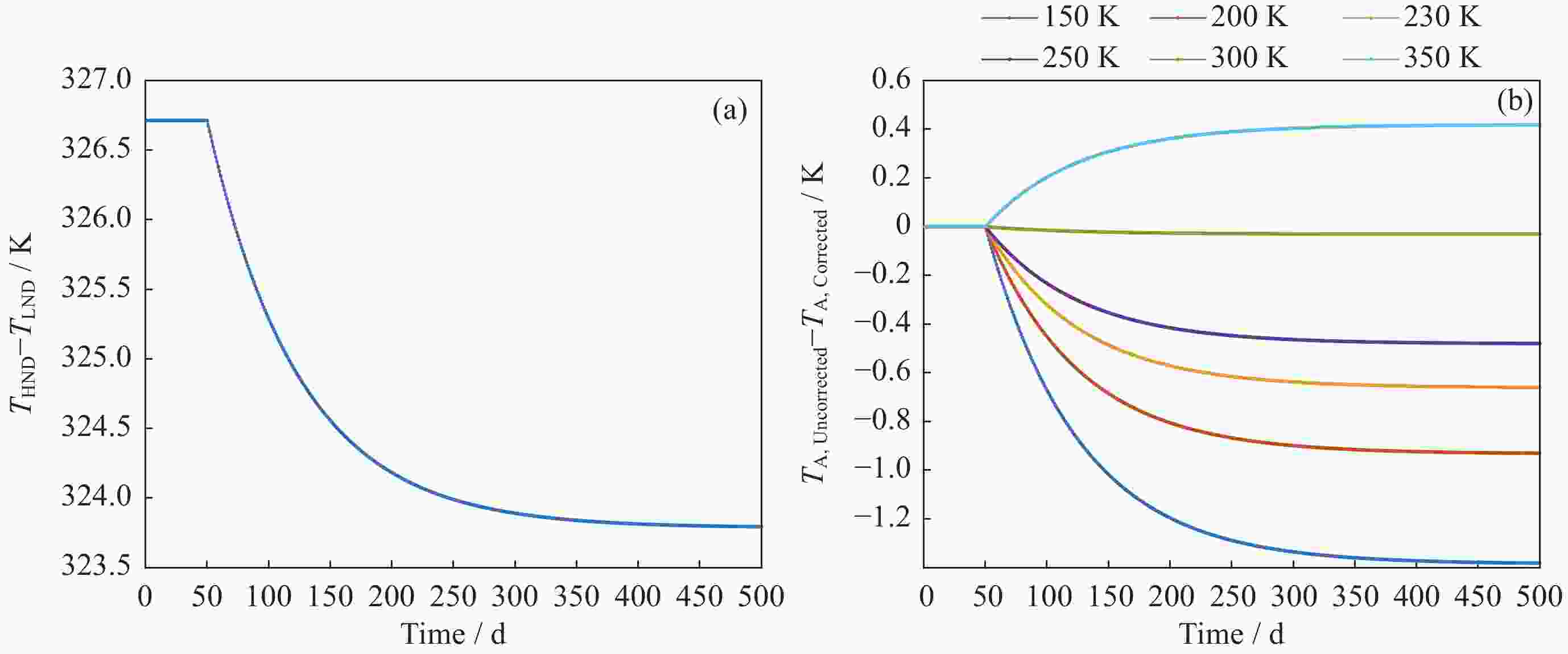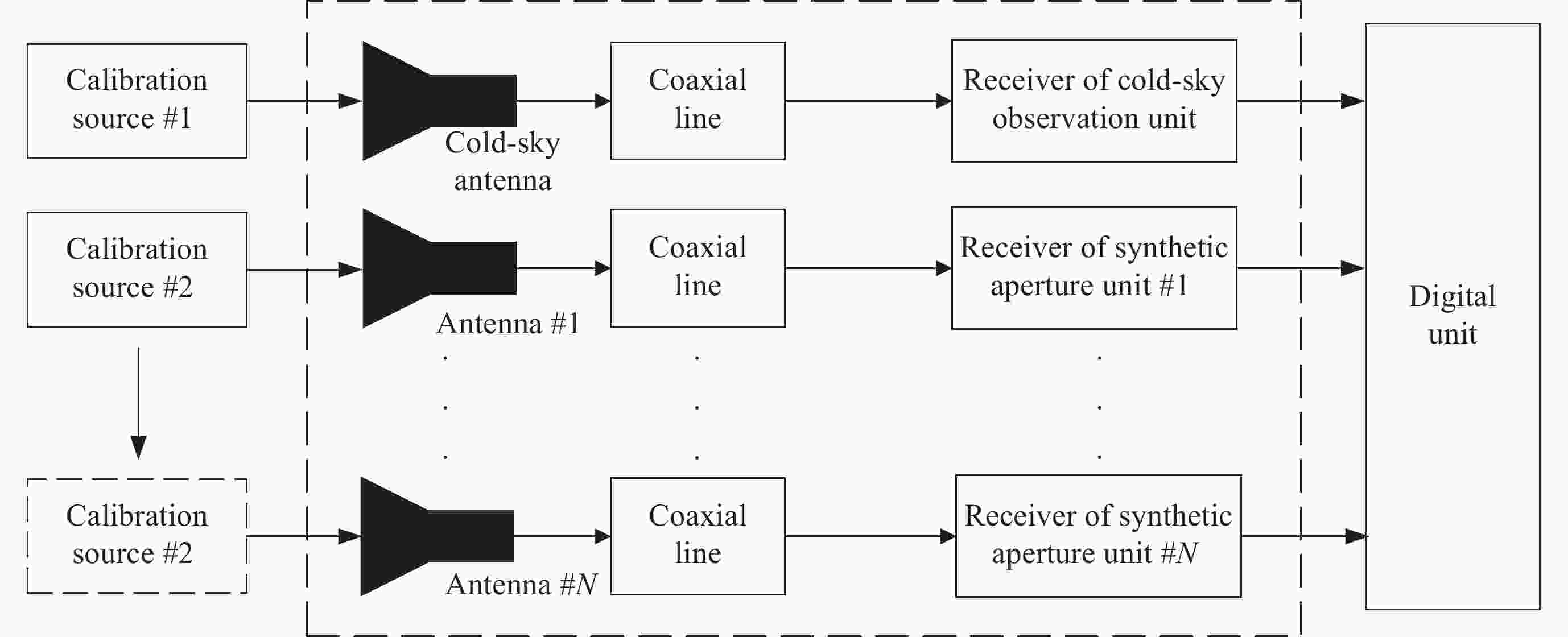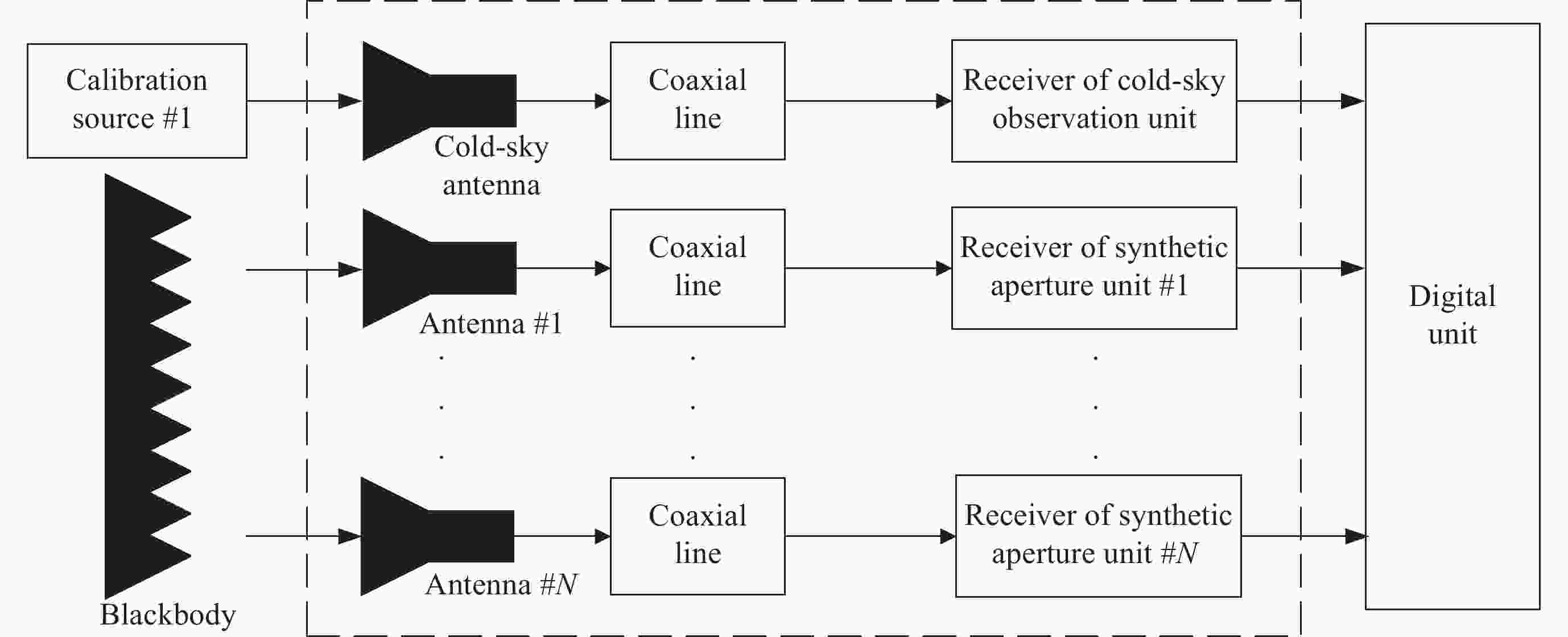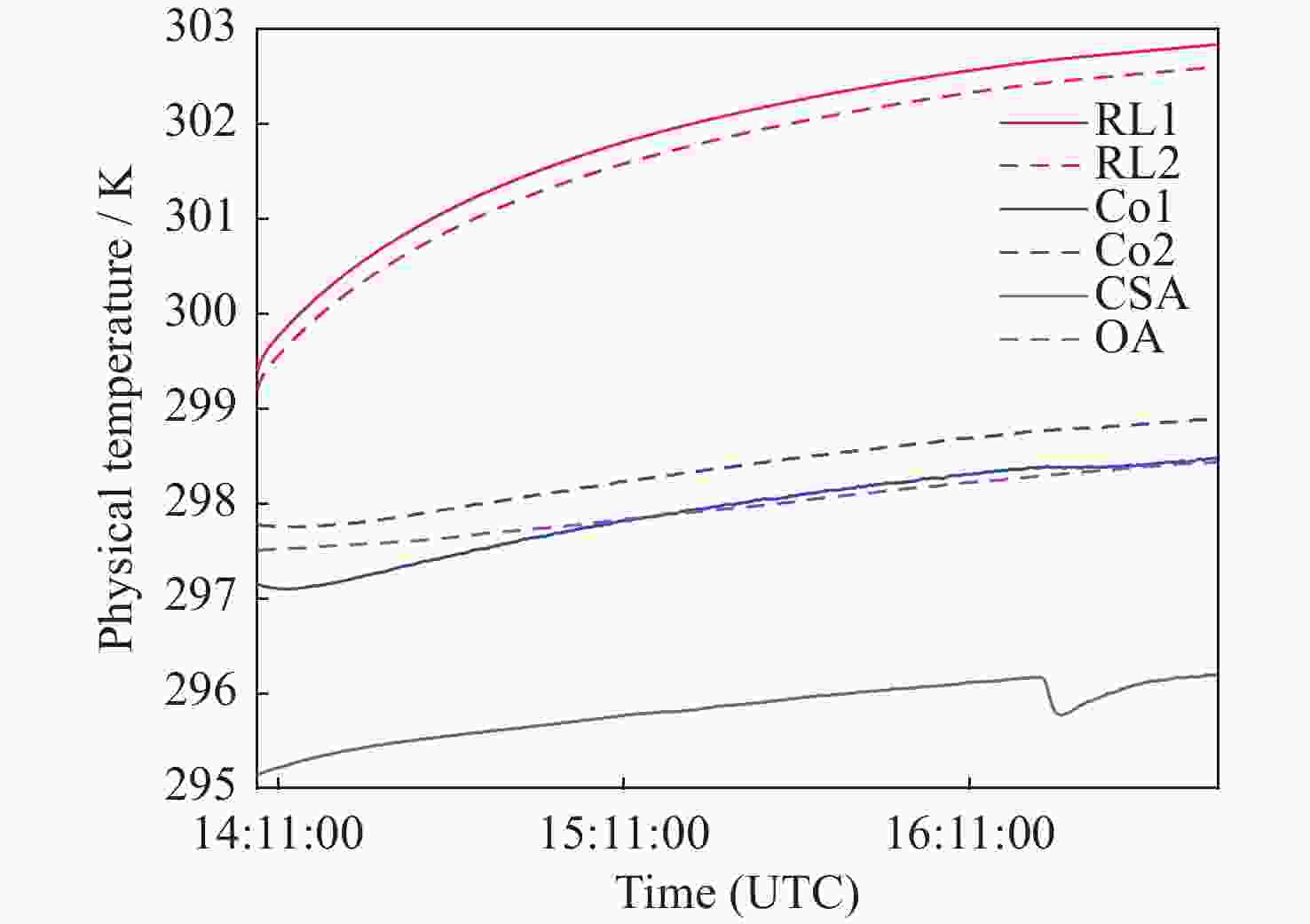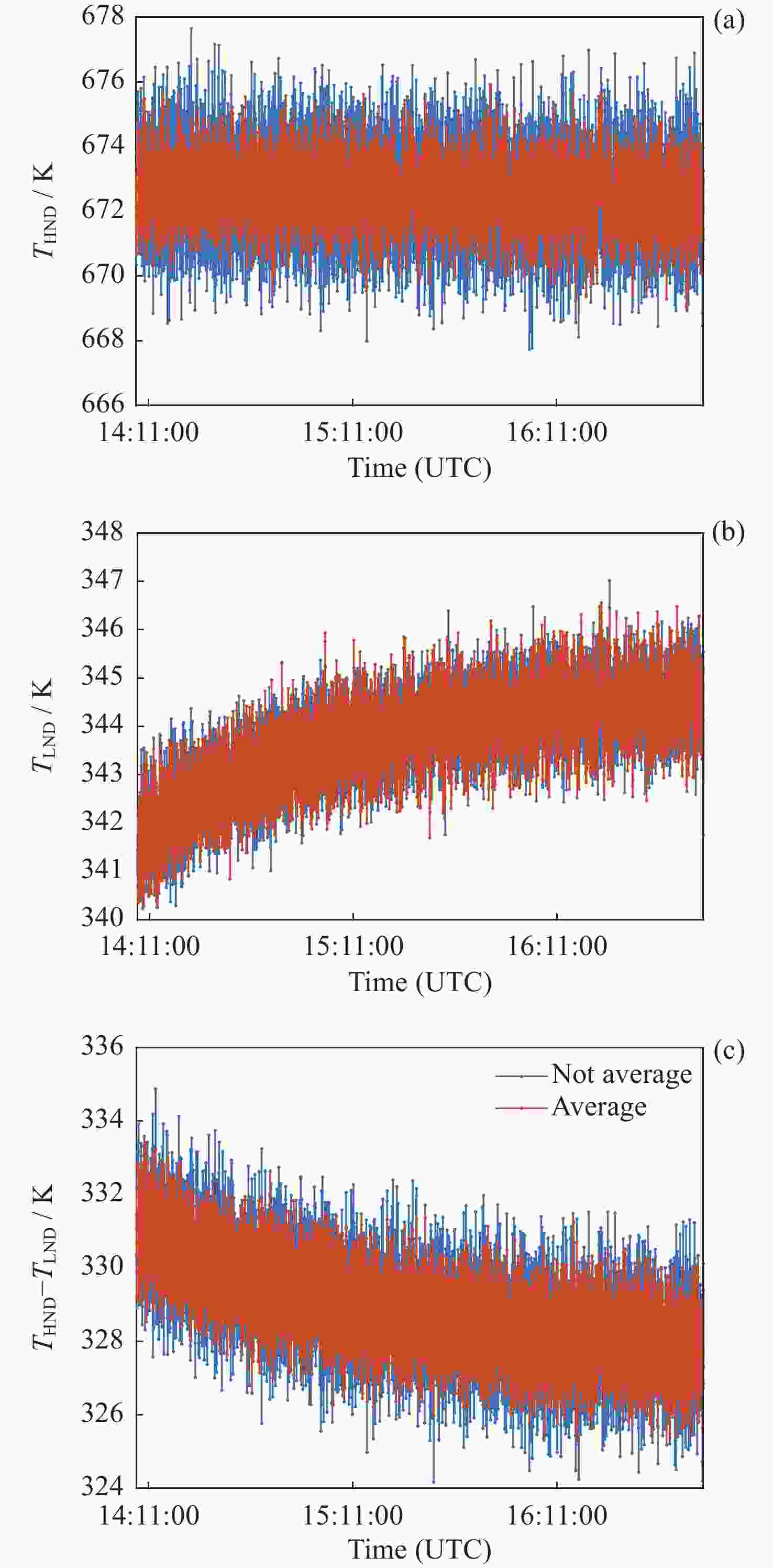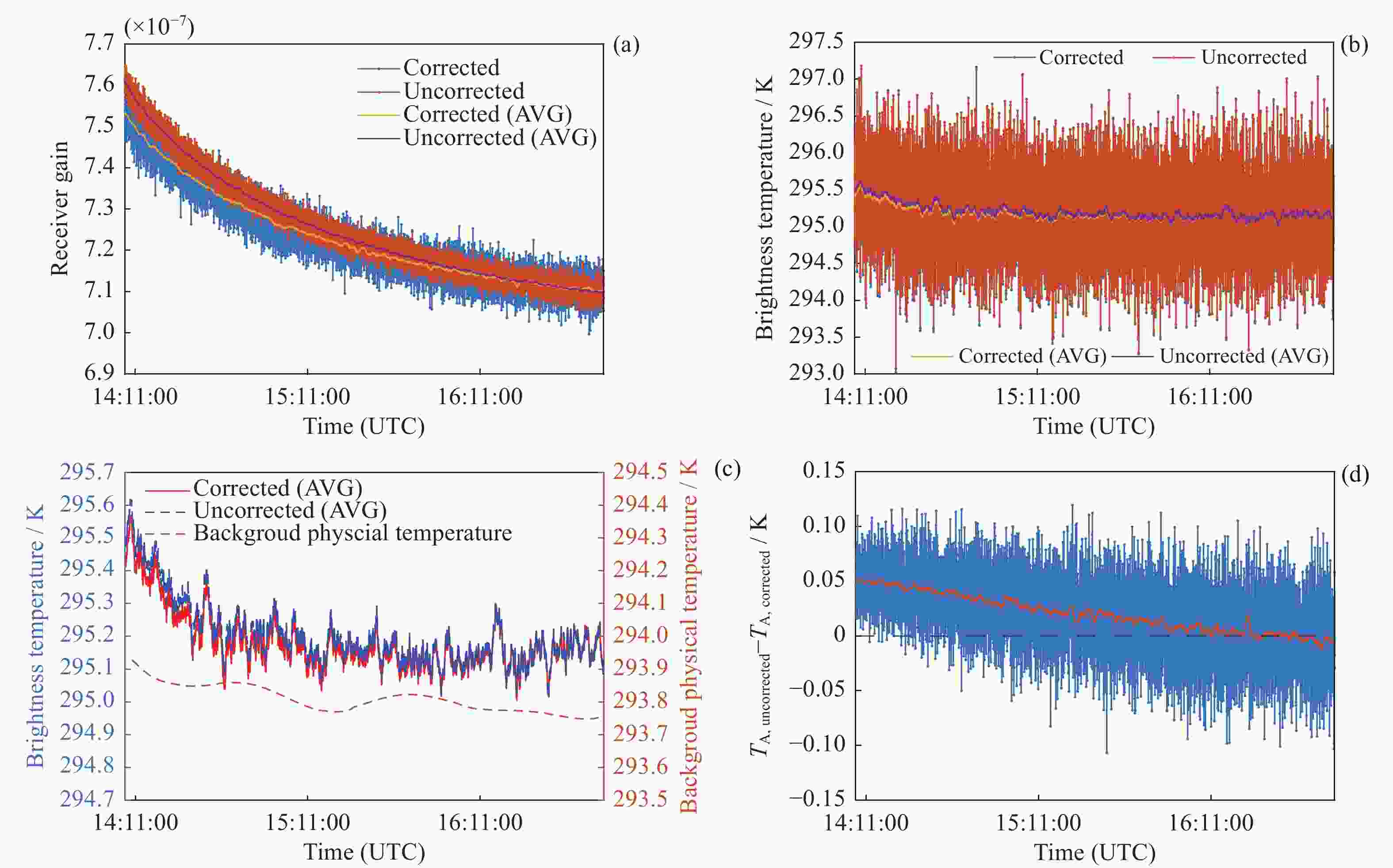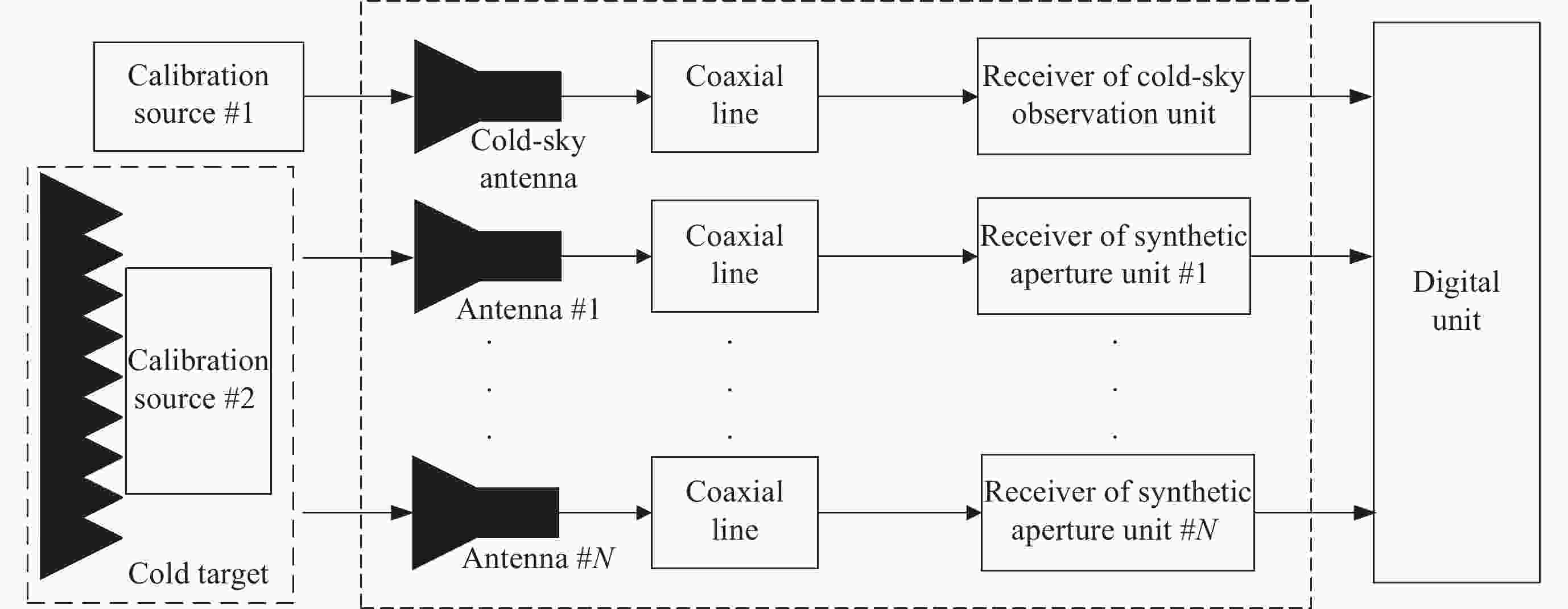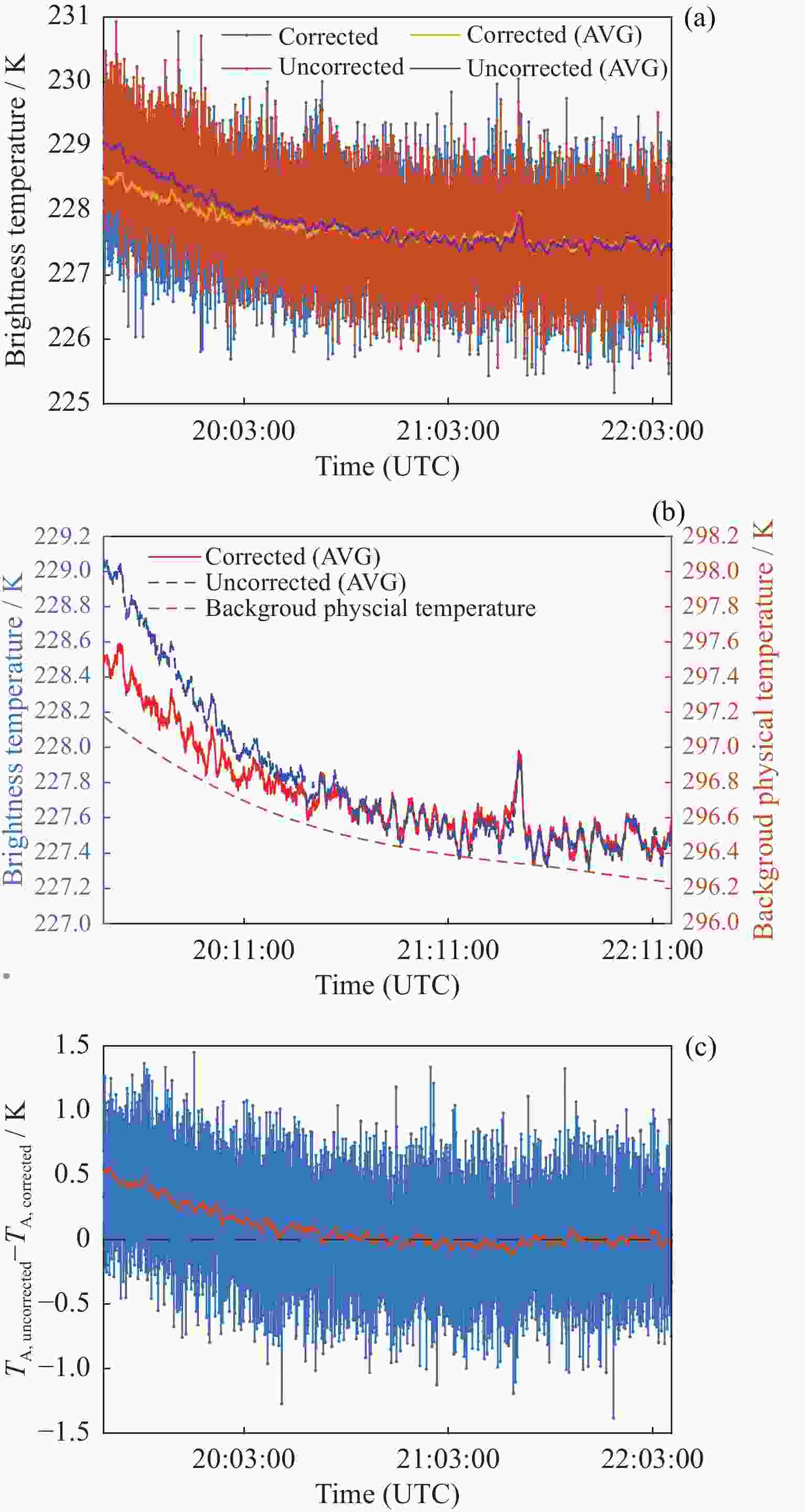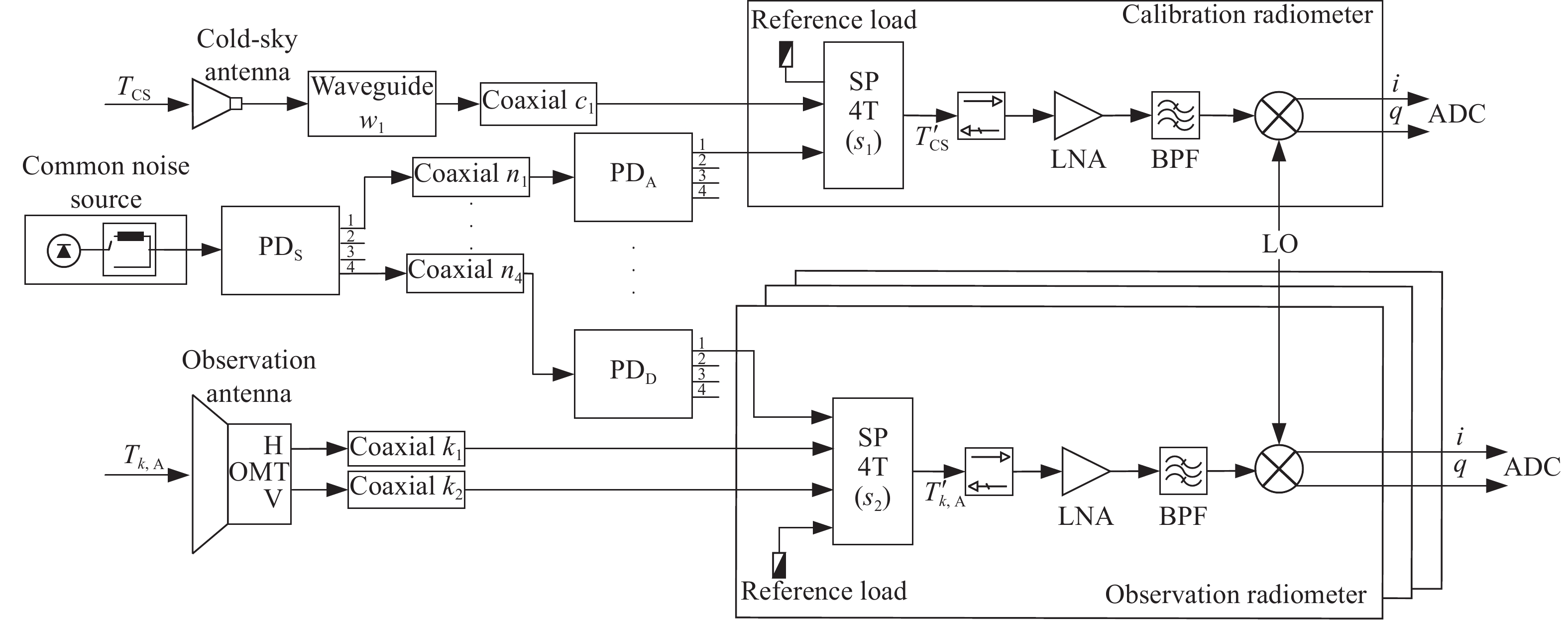基于冷空观测单元的综合孔径微波辐射计幅度定标方法
doi: 10.11728/cjss2024.05.2023-0131 cstr: 32142.14.cjss2024.05.2023-0131
Amplitude Calibration Method for Synthetic Aperture Radiometer Based on Cold-sky Observation Unit
-
摘要: 微波辐射计通过定标获取目标准确的亮温, 是数据定量化应用的必要手段. 综合孔径微波辐射计由多个辐射计单元组成, 定标需求从单一接收机扩展至所有接收单元. 噪声注入是包括综合孔径微波辐射计在内的固定波束指向辐射计所常用的定标方法. 作为定标参考的噪声二极管在轨会受到温度影响发生短期波动, 并受器件老化影响发生长期漂移, 从而导致系统定标精度恶化. 针对上述问题, 提出一种基于冷空观测单元的综合孔径辐射计幅度定标方法. 通过设计专门的冷空观测辐射计通道, 对综合孔径辐射计的公共噪声源进行实时标定, 减小其噪声温度不确定性对综合孔径辐射计系统所有观测通道幅度定标的影响. 结合中国海洋盐度探测卫星主被动探测仪中K波段一维综合孔径辐射计的实际系统方案, 建立了辐射计系统模型及定标模型, 开展了数值仿真及样机定标实验验证. 仿真及实验结果验证了方法的有效性.Abstract: Microwave radiometers obtain the accurate brightness temperature of the target scene through calibration, which is a necessary means for quantitative data application. The synthetic aperture microwave radiometer consists of multiple radiometer units, and the calibration requirement extends from a single receiver to all units. Noise injection is a calibration method for fixed antenna beam radiometers, including synthetic aperture microwave radiometers. However, the noise diode used as the calibration reference encounters issues such as short-term fluctuation caused by temperature and long-term drift resulting from the aging of the device, leading to the deterioration of the system's calibration accuracy. To address the aforementioned problems, this paper proposes a method of amplitude calibration for synthetic aperture radiometers based on a special cold-sky observation unit. By designing a dedicated cold-sky observation radiometer channel, the common noise source of the synthetic aperture radiometer is calibrated in real-time, reducing the influence of noise temperature uncertainty on the amplitude calibration of all observation channels in the synthetic aperture radiometer system. Based on the system scheme of the K-band one-dimensional synthetic aperture radiometer in the Microwave Imager Combined Active and Passive of China’s Ocean Salinity Detection Satellite, the radiometer system model and calibration model are established, and numerical simulations and prototype calibration experiments are carried out. Simulation and experimental results validate the effectiveness of the proposed method.
-
图 12 高亮温场景定标实验结果. (a)观测单元接收机增益, (b)目标亮温结果, (c)背景温度与亮温对比, (d)公共噪声修正的效果
Figure 12. Calibration experiment result of high brightness temperature scene. (a) Observation unit receiver gain, (b) result of target brightness temperature, (c) contrast between background temperature and brightness temperature, (d) effect of common noise correction
表 1 公共噪声网络修正系数定标误差仿真参数
Table 1. Common noise network correction coefficient calibration error simulation parameters
参数 数值 公共噪声至冷空观测单元
路径损耗/dB16.502 公共噪声至综合孔径单元
路径损耗/dB18.52 公共噪声温度差/K 330~380 定标参数误差/(%) ±4 目标亮温/K 100~320 接收机非线性 0.9999 表 2 公共噪声漂移仿真设置参数
Table 2. Common noise drift simulation set parameters
参数 数值 公共噪声路径损耗/dB 16.502 公共噪声漂移/(%) 1 高公共噪声温度/K 674 低公共噪声温度/K 350 目标亮温/K 100~320 接收机非线性 0.9999 -
[1] SIEDLER G, GOULD J, CHURCH J A. Ocean Circulation and Climate: Observing and Modelling the Global Ocean[M]. Amsterdam: Elsevier, 2001 [2] LUKAS R, LINDSTROM E. The mixed layer of the western equatorial Pacific Ocean[J]. Journal of Geophysical Research: Oceans, 1991, 96(S1): 3343-3357 [3] BALAGURU K, CHANG P, SARAVANAN R, et al. Ocean barrier layers’ effect on tropical cyclone intensification[J]. Proceedings of the National Academy of Sciences of the United States of America, 2012, 109(36): 14343-14347 [4] BINGHAM F M, HOWDEN S D, KOBLINSKY C J. Sea surface salinity measurements in the historical database[J]. Journal of Geophysical Research: Oceans, 2002, 107(C12): 8019 [5] REUL N, GRODSKY S A, ARIAS M, et al. Sea surface salinity estimates from spaceborne L-band radiometers: an overview of the first decade of observation (2010–2019)[J]. Remote Sensing of Environment, 2020, 242: 111769 doi: 10.1016/j.rse.2020.111769 [6] AKINS A, BROWN S, LEE T, et al. Simulation framework and case studies for the design of sea surface salinity remote sensing missions[J]. IEEE Journal of Selected Topics in Applied Earth Observations and Remote Sensing, 2023, 16: 1321-1334 doi: 10.1109/JSTARS.2023.3234407 [7] ZHANG L J, YIN X B, WANG Z Z, et al. Preliminary analysis of the potential and limitations of MICAP for the retrieval of sea surface salinity[J]. IEEE Journal of Selected Topics in Applied Earth Observations and Remote Sensing, 2018, 11(9): 2979-2990 doi: 10.1109/JSTARS.2018.2849408 [8] LIU H, ZHU D, NIU L J, et al. MICAP (Microwave ima-ger combined active and passive): A new instrument for Chinese ocean salinity satellite[C]//2015 IEEE International Geoscience and Remote Sensing Symposium (IGARSS). Milan: IEEE, 2015: 184-187 [9] 牛立杰, 刘浩, 武林, 等. 面向星载海洋盐度探测应用的L波段综合孔径辐射计原理样机研制与试验研究[J]. 电子与信息学报, 2017, 39(8): 1841-1847NIU Lijie, LIU Hao, WU Lin, et al. Development and experimental study on L-band synthetic aperture radiometer prototype for ocean salinity measurement[J]. Journal of Electronics & Information Technology, 2017, 39(8): 1841-1847 [10] FIXSEN D J, CHENG E S, GALES J M, et al. The cosmic microwave background spectrum from the full COBE* FIRAS data set[J]. The Astrophysical Journal, 1996, 473(2): 576-587 doi: 10.1086/178173 [11] BROWN S, RUF C, KEIHM S, et al. Preliminary validation and performance of the JASON microwave radiometer[C]//IGARSS 2003. 2003 IEEE International Geoscience and Remote Sensing Symposium. Proceedings (IEEE Cat. No. 03CH37477). Toulouse: IEEE, 2003: 1077-1079 [12] BROWN S, DESAI S, KEIHM S, et al. JMR noise diode stability and recalibration methodology after three years on-orbit[C]//2006 IEEE MicroRad. San Juan: IEEE, 2006: 7-12 [13] BROWN S T, DESAI S, LU W W, et al. On the long-term stability of microwave radiometers using noise diodes for calibration[J]. IEEE Transactions on Geoscience and Remote Sensing, 2007, 45(7): 1908-1920 doi: 10.1109/TGRS.2006.888098 [14] SCHARROO R, LILLIBRIDGE J L, SMITH W H F, et al. Cross-calibration and long-term monitoring of the micro-wave radiometers of ERS, TOPEX, GFO, Jason, and Envisat[J]. Marine Geodesy, 2004, 27(1/2): 279-297 [15] PIEPMEIER J R, HONG L, PELLERANO F A. Aquarius L-band microwave radiometer: 3 years of radiometric performance and systematic effects[J]. IEEE Journal of Selected Topics in Applied Earth Observations and Remote Sensing, 2015, 8(12): 5416-5423 doi: 10.1109/JSTARS.2015.2435493 [16] DINNAT E P, LE VINE D M, PIEPMEIER J R, et al. Aquarius L-band radiometers calibration using cold sky observations[J]. IEEE Journal of Selected Topics in Applied Earth Observations and Remote Sensing, 2015, 8(12): 5433-5449 doi: 10.1109/JSTARS.2015.2496362 [17] PIEPMEIER J R, FOCARDI P, HORGAN K A, et al. SMAP L-band microwave radiometer: Instrument design and first year on orbit[J]. IEEE Transactions on Geoscience and Remote Sensing, 2017, 55(4): 1954-1966 doi: 10.1109/TGRS.2016.2631978 [18] PENG J Z, MISRA S, PIEPMEIER J R, et al. Soil Moisture Active/Passive (SMAP) L-band microwave radiometer post-launch calibration upgrade[J]. IEEE Journal of Selected Topics in Applied Earth Observations and Remote Sensing, 2019, 12(6): 1647-1657 doi: 10.1109/JSTARS.2019.2902492 [19] RUF C S, KEIHM S J, JANSSEN M A. TOPEX/Poseidon Microwave Radiometer (TMR). I. Instrument description and antenna temperature calibration[J]. IEEE Transactions on Geoscience and Remote Sensing, 1995, 33(1): 125-137 doi: 10.1109/36.368215 [20] ZHANG D H, WANG Z Z, WANG H J, et al. ACMR system description and performance[C]//2014 IEEE Geoscience and Remote Sensing Symposium. Quebec City: IEEE, 2014: 5179-5182 [21] BROWN M A, TORRES F, CORBELLA I, et al. SMOS calibration[J]. IEEE Transactions on Geoscience and Remote Sensing, 2008, 46(3): 646-658 doi: 10.1109/TGRS.2007.914810 [22] KAINULAINEN J, COLLIANDER A, CLOSA J, et al. Radiometric performance of the SMOS reference radiometers—assessment after one year of operation[J]. IEEE Transactions on Geoscience and Remote Sensing, 2012, 50(5): 1367-1383 doi: 10.1109/TGRS.2011.2177273 [23] MARTÍN-NEIRA M, OLIVA R, CORBELLA I, et al. SMOS instrument performance and calibration after six years in orbit[J]. Remote Sensing of Environment, 2016, 180: 19-39 doi: 10.1016/j.rse.2016.02.036 [24] 牛立杰, 刘浩, 吴季. 高灵敏度、高稳定度微波辐射计技术研究与实验验证[J]. 电子与信息学报, 2017, 39(8): 2028-2032NIU Lijie, LIU Hao, WU Ji. Research and experimental verification on high sensitivity and high stability micro-wave radiometer[J]. Journal of Electronics & Information Technology, 2017, 39(8): 2028-2032 [25] CAMPS A. Noise wave analysis of Dicke and noise injection radiometers: complete S parameter analysis and effect of temperature gradients[J]. Radio Science, 2010, 45(5): RS5004 [26] GONZÁLEZ-HARO C, TORRES F, DUFFO N, et al. Li-nearity characterization of detectors for interferometric radiometers[C]//2009 IEEE International Geoscience and Remote Sensing Symposium. Cape Town: IEEE, 2009: IV-657-IV-660 [27] COTO J A, JONES L. Nonlinear radiometer counts to antenna temperature inverse transfer function for a Dicke radiometer with noise injection[C]//2019 Southeast Conference. Huntsville: IEEE, 2019: 1-5 -
-





 仝星 男, 1998年出生于河南省南阳市, 现为中国科学院国家空间科学中心硕士研究生, 主要研究方向为综合孔径微波辐射计的定标等. E-mail:
仝星 男, 1998年出生于河南省南阳市, 现为中国科学院国家空间科学中心硕士研究生, 主要研究方向为综合孔径微波辐射计的定标等. E-mail: 
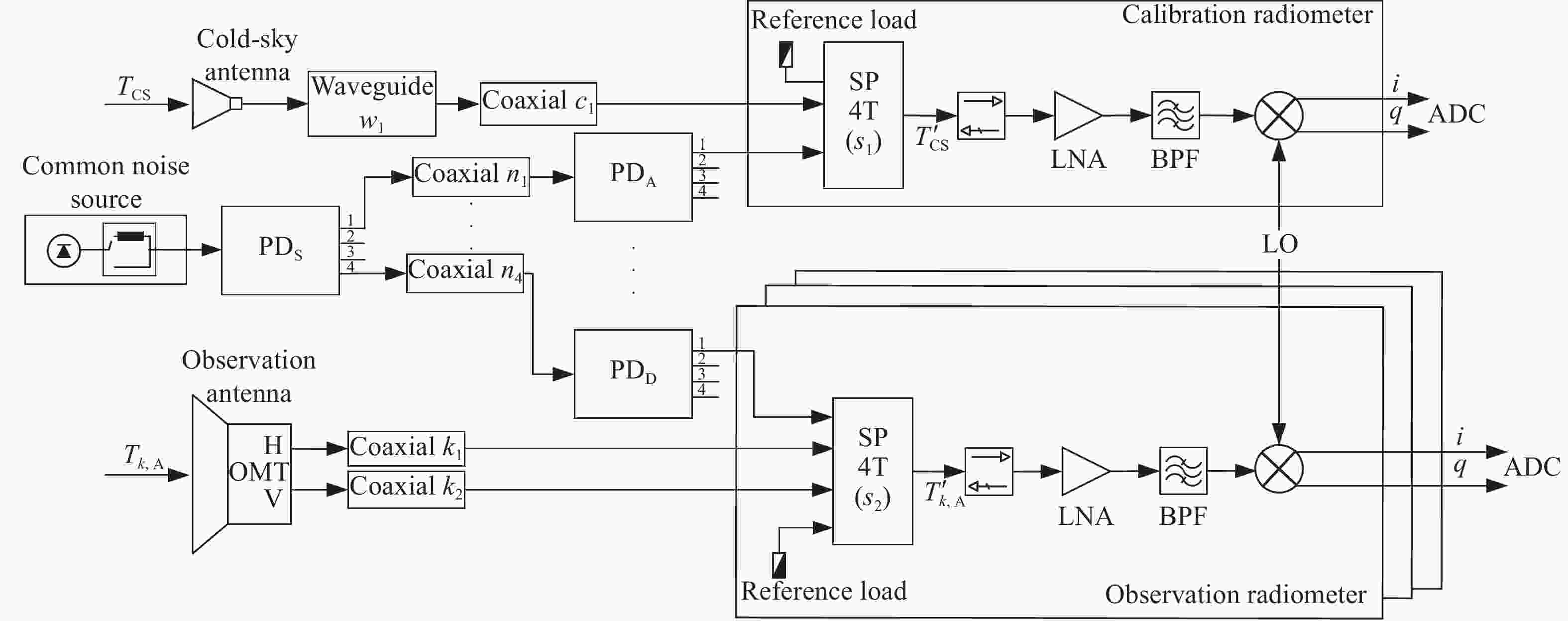
 下载:
下载:
